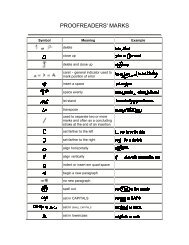View - Martin Kröger - ETH Zürich
View - Martin Kröger - ETH Zürich
View - Martin Kröger - ETH Zürich
Create successful ePaper yourself
Turn your PDF publications into a flip-book with our unique Google optimized e-Paper software.
1300 FANG, KRÖGER, AND ÖTTINGER<br />
which reflects a proportionality between stress and alignment for fixed Z, and a contribution<br />
associated with the chain stretching,<br />
2 r c1n p k B T<br />
0<br />
1<br />
uuf u,s,rd 3 uds,<br />
15<br />
which may cause deviations from the stress-optic rule when stretching occurs. In these<br />
expressions, n p is the number density of polymers. The plateau modulus G N<br />
0 , to which 2<br />
does not contribute, is given by the Doi–Edwards result<br />
G N<br />
0 <br />
3<br />
5 Zn p k B T. 16<br />
When max approaches infinity, we obtain the simple expression<br />
5G N<br />
0 <br />
2<br />
0<br />
1<br />
uuf u,s,rd 3 uds,<br />
17<br />
which may be regarded as a manifestation of the stress-optic rule, see also Fuller 1995.<br />
The presented model accounts for double reptation, CCR, and chain stretching and avoids<br />
the IA approximation by the drift term and the creation/destruction term. It has been<br />
verified to possess the full structure of GENERIC, in particular, the time–structure invariance<br />
of reversible dynamics. The model has only four structural degrees of freedom,<br />
one from the position label s, two from the unit orientation vector u, and one from the<br />
chain stretching . In this paper, we assume d / s 3Z for our model. In addition to<br />
0<br />
the plateau modulus G N and the reptation time d , the model has four parameters<br />
(Z, 1 , 2 , max ) with the preferable values 1 2 1/ for melts as motivated in<br />
0<br />
Part I and above. In this work we regard G N and d as the key adjustable parameters,<br />
while Z and max are fixed by the chemistry of a particular polymer.<br />
III. SIMULATION ALGORITHM<br />
In this section, we describe the numerical simulation of the model. According to the<br />
theory of stochastic differential equations SDEs, the diffusion equation 9, when ignoring<br />
the creation/loss term discussed separately below, is equivalent to the following<br />
set of Itô SDEs for the stochastic processes u t , and s t :<br />
du t 1 u t u t<br />
u t 2 •–u t 2Du tdt2D 1 u t u t<br />
u t 2 •dW t ,<br />
ds t ṡ tot dt 1 2 d<br />
dW t ,<br />
18<br />
19<br />
where W t and all the three components of the vector W t are independent Wiener processes.<br />
The mentioned equivalence means that the average of an arbitrary function<br />
X(u,s), evaluated as an integral with the solution f of the diffusion equation at the time<br />
t, can be obtained as the expectation of the stochastic process X(u t ,s t )<br />
1<br />
<br />
0 Xu,sfu,s,td 3 uds Xu t ,s t .<br />
20





